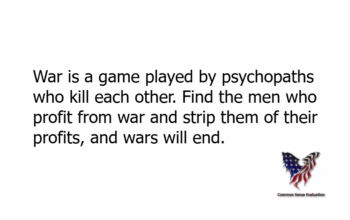Imagine a land of icy silence where the snow stretches blank like the pages of an untouched diary. This is Antarctica, the coldest, windiest, and perhaps most mysterious continent on Earth. But behind its icy facade lies a story not fully told to the public—one that involves a treaty signed by 56 nations, promising never to venture into certain parts of this icy wilderness for military uses. What could possibly be so important, so hidden, that makes Antarctica a ‘no-go’ area for these powerful countries? Let’s delve into the depths of this chilly mystery.
The Antarctic Treaty Explained
In 1959, a group of countries came together to sign a remarkable agreement now known as the Antarctic Treaty. Principal among its provisions is that Antarctica shall be used for peaceful purposes only. Military activity, including weapons testing and nuclear explosions, is forbidden. Furthermore, the treaty encourages scientific research, and aims to protect the continent’s eco-zone.
But why the need for such an accord? The unanimous decision to keep military claws retracted seems guided not only by a spirit of international scientific cooperation but perhaps by deeper, unspoken reasons. Could there be something under the ice—resources, ancient artifacts, or even alien bases—that everyone wants but no one can have?
The Conspiracy Theory: What Lies Beneath?
This is where things get interesting — and where mainstream explanations might not satisfy a curious mind. Why would such an array of powerful nations all agree to limit their rights and opportunities unless there was something incredibly valuable and perhaps dangerous concealed by the Antarctic ice?
Conspiracy theorists argue that there might be ancient technology or alien life forms buried under the ice. Some even claim these could be remnants of ancient civilizations far advanced beyond our current understanding. Such discoveries could potentially offer new forms of energy, unknown minerals, or even new medical breakthroughs.
Secret Bases and Forbidden Zones
Despite the treaty’s stipulation for openness and scientific freedom, certain areas of Antarctica are shrouded in secrecy, with restricted access even for international scientists. This fuels belief in secret bases operating under a cloak of research—bases that could be hiding activities not sanctioned by the treaty.
Could these facilities be testing experimental tech or coordinating with extraterrestrial entities? The idea isn’t as far-fetched as it sounds when you consider the inexplicable resignation from norms that the continent forces upon global powers.
The Environment or The Cover-Up?
Another angle often discussed is the environmental protection clause in the Antarctic Treaty. At face value, this is a commitment to preserve one of the last unspoiled places on earth. However, under a lens of skepticism, could environmental concern be a convenient pretense for keeping prying eyes away from a more sinister agenda?
Why emphasize ecological stability in a region with no indigenous human population unless disclosing the true nature of the continent would lead to irreversible environmental damage—or perhaps the disclosure of top-secret information that could cause mass chaos?
The Silence and Isolation of Antarctica
The sheer isolation of Antarctica also works perfectly for anyone needing privacy on a grand scale. With no permanent residents and an environment that is harsh and life-threatening, few people question the happenings on this icy land. The few who visit—scientists, researchers, and the occasional tourist—are often monitored closely, kept on guided paths far from any so-called “sensitive” areas.
The Global Interest
Why would all these countries, with their diverse agendas and constant bickering on global platforms, find common ground in Antarctica? Perhaps it is a mutual understanding that whatever is hidden beneath the ice, its power and the truth of its origin are too overwhelming for any one nation to possess.
Wrapping Up the Cold Case
As you zip up this exploration of Antarctica’s mysteries, remember the continent’s story isn’t just about snow, ice, and penguins. It might well be a chapter of world history, wrapped in a frozen cover, that contains secrets beyond our wildest imaginations. Whether it’s protecting the planet or protecting themselves, the nations signed to the Antarctic Treaty appear to be guarding something monumental.
Intrigued? Keep questioning, keep pondering—the truth, as they say, is out there, possibly buried under layers of ice and decades of agreements crafted not just to preserve peace, but perhaps to shield the human race from secrets not yet ready to be uncovered.



